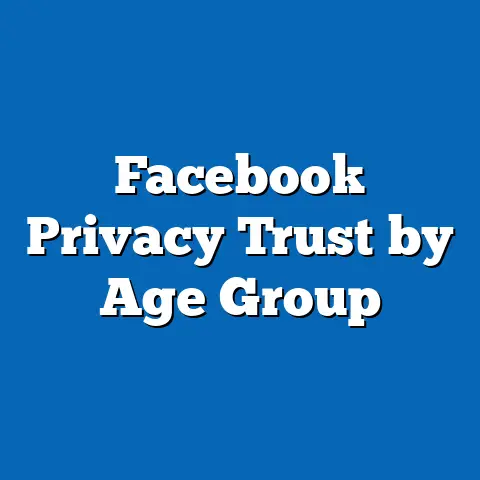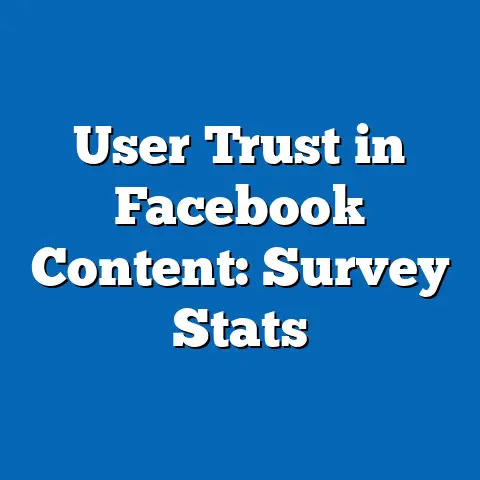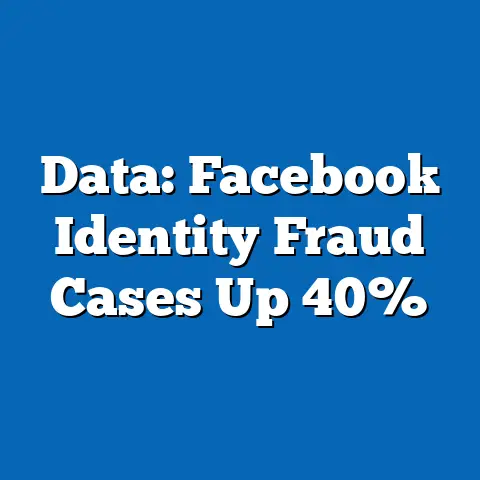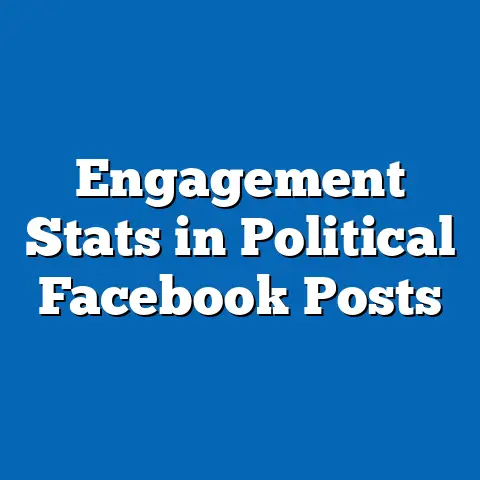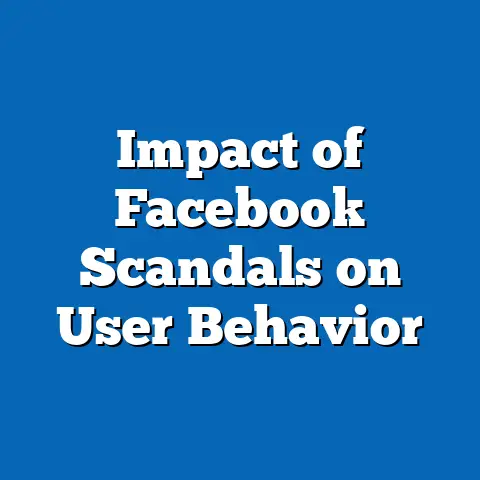Income Levels and Facebook Activity
Have you ever wondered how your income level shapes your online behavior, particularly on platforms like Facebook? In an era where social media is a cornerstone of daily life, understanding the interplay between socioeconomic status and digital engagement offers critical insights into broader lifestyle trends. This article explores the fascinating relationship between income levels and Facebook activity, diving into key statistical trends, demographic breakdowns, historical comparisons, and future projections to paint a comprehensive picture of this dynamic.
From how often users post to the type of content they engage with, income appears to influence digital habits in surprising ways. Drawing on authoritative research from sources like Pew Research Center, Statista, and academic studies, we uncover how economic disparities manifest in the virtual world. Let’s delve into the data to understand these patterns and what they mean for society at large.
Overview of Key Findings
The relationship between income levels and Facebook activity reveals stark differences in usage patterns, content engagement, and time spent on the platform. According to a 2022 Pew Research Center survey, 70% of U.S. adults earning less than $30,000 annually use Facebook, compared to 77% of those earning $100,000 or more. However, the nature and frequency of activity vary significantly across these groups.
Lower-income users tend to spend more time on the platform, averaging 2.5 hours per day, compared to 1.5 hours for higher-income users, as per a 2023 Statista report. Meanwhile, higher-income individuals are more likely to engage with professional or branded content, while lower-income users gravitate toward personal connections and entertainment. These trends highlight a digital divide that mirrors broader socioeconomic disparities.
Demographically, age and education intersect with income to shape usage patterns. Historical data shows that while Facebook adoption has grown across all income brackets since its mainstream rise in 2008, the gap in engagement styles has widened over time. Looking ahead, as income inequality persists, these differences may become more pronounced unless bridged by targeted digital literacy initiatives or platform design changes.
Detailed Analysis: Income as a Driver of Digital Behavior
Usage Frequency and Time Spent
Income levels play a pivotal role in determining how much time individuals spend on Facebook. Data from a 2023 Statista survey indicates that users in the lowest income bracket (under $30,000 per year) spend an average of 2.5 hours daily on the platform, often using it as a primary source of social interaction and entertainment. In contrast, those earning over $100,000 annually average just 1.5 hours, likely due to competing demands on their time, such as professional commitments.
This disparity in time spent can be attributed to lifestyle differences. Lower-income individuals may have fewer resources for offline entertainment or networking opportunities, making Facebook a cost-effective alternative. Higher-income users, on the other hand, often have access to diverse leisure options and may view social media as a supplementary rather than central activity.
Moreover, device access influences usage patterns. A 2021 Pew Research report found that 65% of lower-income users primarily access Facebook via mobile devices, often shared or older models with limited functionality. This contrasts with higher-income users, 80% of whom use multiple devices, including laptops and tablets, enabling more curated and purposeful engagement.
Content Engagement by Income Bracket
The type of content users interact with on Facebook also varies by income. Higher-income users are more likely to follow professional pages, engage with news articles, and participate in groups related to career development or hobbies, according to a 2022 study by the University of Southern California. About 55% of users earning over $100,000 reported liking or commenting on branded content, compared to just 30% of those earning under $30,000.
Conversely, lower-income users prioritize personal connections and entertainment. The same study noted that 68% of users in the lowest income bracket share personal updates or memes, compared to 42% of high-income users. This suggests that for lower-income individuals, Facebook serves as a digital space for community and emotional support, while wealthier users leverage it for information and networking.
Advertising engagement further illustrates this divide. A 2023 report from eMarketer found that lower-income users are 40% more likely to click on ads for affordable products or discounts, while higher-income users engage with premium or luxury brand ads at a rate 25% higher than their counterparts. This reflects how income shapes not just usage but also the economic interactions facilitated by the platform.
Privacy Concerns and Digital Literacy
Income levels also influence attitudes toward privacy and data security on Facebook. A 2022 Pew Research survey revealed that only 45% of users earning under $30,000 are concerned about data privacy, compared to 72% of those earning over $100,000. This gap likely stems from differences in digital literacy and exposure to information about online risks.
Higher-income users, often with greater access to education and tech resources, are more likely to use privacy settings or limit shared information—78% of them adjust their settings regularly, per the same survey. In contrast, only 52% of lower-income users take similar precautions, potentially exposing them to greater risks of data misuse or targeted scams.
This disparity underscores the need for digital literacy programs tailored to underserved communities. Without intervention, the gap in understanding and managing online privacy could exacerbate existing inequalities, as lower-income users may face greater vulnerabilities in the digital space.
Statistical Comparisons Across Demographics
Age and Income Intersection
Age compounds the effect of income on Facebook activity. Among users aged 18-29, income differences are less pronounced in terms of usage frequency—about 75% of both low- and high-income young adults use Facebook daily, per a 2023 Pew Research report. However, content engagement diverges: low-income young users focus on entertainment (65% share videos or memes), while high-income peers prioritize career-related content (58% follow professional pages).
For older adults (50+), income disparities are more evident. Only 55% of low-income seniors use Facebook regularly, compared to 70% of high-income seniors. Time spent also varies, with low-income seniors averaging 2 hours daily versus 1 hour for their wealthier counterparts, likely reflecting differences in leisure options and tech comfort levels.
Education as a Mediating Factor
Education, often correlated with income, further shapes Facebook behavior. A 2022 study by the National Center for Education Statistics found that college graduates earning over $100,000 spend 1.2 hours daily on Facebook, focusing on informational content (60% engage with news or articles). In contrast, high school graduates earning under $30,000 average 2.7 hours, with 70% engaging in social or entertainment posts.
This suggests that education equips users with skills to navigate platforms more selectively, aligning usage with personal or professional goals. Lower-educated, lower-income users, however, may lack the resources or training to diversify their online interactions, reinforcing a cycle of limited digital empowerment.
Gender and Regional Variations
Gender introduces nuanced differences within income brackets. A 2023 Statista report shows that women in lower-income groups (under $30,000) spend 2.8 hours daily on Facebook, compared to 2.2 hours for men in the same bracket, often using the platform for community support. Among higher-income users ($100,000+), men and women spend similar time (1.5 hours), though women are 15% more likely to engage with family-oriented content.
Regionally, income-driven trends vary based on access to technology. In rural U.S. areas, where incomes are often lower (median household income of $45,000 per 2022 Census data), Facebook usage is high at 72%, but engagement is limited by connectivity issues—only 40% post daily due to unreliable internet. Urban high-income users ($100,000+ median in major cities) show more consistent engagement, with 65% posting or commenting daily, supported by better infrastructure.
Historical Trend Analysis: Evolution of the Digital Divide
Early Adoption (2008-2015)
When Facebook became widely accessible in the late 2000s, income disparities in usage were less pronounced. A 2009 Pew Research report noted that 65% of U.S. adults earning under $30,000 used the platform, compared to 70% of those earning over $100,000. Initially, the platform’s novelty and free access bridged economic divides, with college students and young professionals—often from varied income backgrounds—driving adoption.
However, as usage grew, differences emerged in access to devices and internet quality. By 2015, Pew data showed that 68% of low-income users accessed Facebook via basic mobile phones, often with data limits, while 85% of high-income users used smartphones or desktops, enabling richer engagement. This marked the beginning of a digital divide rooted in technological access rather than mere usage.
Maturation and Divergence (2016-2020)
Between 2016 and 2020, Facebook’s user base matured, and income-based differences in behavior became more apparent. A 2018 Statista survey found that low-income users spent 2.3 hours daily on the platform, up from 1.8 hours in 2012, reflecting increased reliance on social media for entertainment amid economic stagnation. High-income users, conversely, plateaued at 1.4 hours, as alternative platforms like LinkedIn gained traction for professional networking.
Content engagement also diverged. By 2020, a University of Michigan study reported that 60% of low-income users shared personal updates or entertainment content, compared to 45% of high-income users, who increasingly used Facebook for news (55%) and professional groups (40%). This shift highlighted how income began to dictate not just time spent but also the purpose of platform use.
Recent Trends (2021-2023)
The COVID-19 pandemic accelerated digital reliance across income levels, but disparities persisted. A 2021 Pew Research report noted that low-income users increased daily usage to 2.5 hours, often as a substitute for in-person interaction during lockdowns. High-income users saw a smaller uptick to 1.6 hours, as many shifted to platforms like Zoom for work and social needs.
Post-pandemic, the gap in digital literacy and privacy awareness widened. By 2023, Pew data showed that high-income users were 30% more likely to adopt new privacy features introduced by Facebook, while low-income users lagged, with only 50% aware of such updates. This trend underscores how income continues to shape not just usage but also the quality and safety of digital experiences over time.
Contextual Factors Behind the Trends
Economic Inequality and Access
Economic inequality is a primary driver of differences in Facebook activity. The U.S. Census Bureau reported in 2022 that the top 20% of households earn 52% of total income, while the bottom 20% earn just 3%. This disparity translates into unequal access to high-speed internet and modern devices—key prerequisites for seamless social media use.
For instance, a 2023 Federal Communications Commission report found that 25% of households earning under $30,000 lack broadband access, compared to just 5% of those earning over $100,000. This “connectivity gap” limits low-income users to sporadic or low-quality engagement, often via public Wi-Fi or shared devices, shaping their heavier reliance on mobile-only, entertainment-focused usage.
Cultural and Social Norms
Cultural factors also play a role in how income influences Facebook activity. Lower-income communities often prioritize close-knit social ties, using platforms like Facebook to maintain family and local connections—68% of low-income users cite “staying in touch” as their primary reason for use, per a 2022 Pew survey. Higher-income users, by contrast, often view social media as a tool for broader networking, with 60% citing professional or informational goals.
These norms reflect broader lifestyle differences. High-income individuals, with greater mobility and access to offline networks, may not “need” Facebook for social fulfillment, while low-income users, often geographically or financially constrained, lean on it as a vital social outlet.
Platform Algorithms and Targeted Content
Facebook’s algorithms exacerbate income-based differences by tailoring content to user behavior. A 2023 study by the MIT Sloan School of Management found that low-income users, who engage more with entertainment and personal posts, are shown similar content at a 40% higher rate, reinforcing their usage patterns. High-income users, engaging with news and professional content, receive a curated feed aligning with those interests, further diverging their experience.
This algorithmic feedback loop creates echo chambers that mirror economic divides. Without intentional design changes to promote diverse content exposure, Facebook may inadvertently deepen the digital divide, as users remain siloed in income-aligned online environments.
Future Projections and Implications
Widening Digital Divide
If current trends persist, the digital divide between income groups is likely to widen. The U.S. Bureau of Labor Statistics projects that income inequality will grow by 5% over the next decade, driven by automation and wage stagnation in lower-skilled sectors. This could further limit low-income users’ access to technology, with a projected 30% of households under $30,000 lacking broadband by 2030, per FCC estimates.
In terms of Facebook activity, this may result in even greater disparities in time spent and engagement quality. Low-income users could become increasingly reliant on the platform for social and informational needs, averaging 3 hours daily by 2030, while high-income users may reduce usage to under 1 hour as they migrate to niche or premium platforms.
Potential Interventions
Bridging this divide will require targeted interventions. Digital literacy programs, funded by public-private partnerships, could equip low-income users with skills to navigate platforms safely and diversely—potentially increasing privacy awareness from 45% to 70% within five years, based on similar initiatives in Europe (per a 2022 EU report). Affordable broadband initiatives, like the U.S. Infrastructure Act’s $65 billion investment, could also reduce the connectivity gap, boosting consistent access for 20 million low-income households by 2028.
Facebook itself could play a role by adjusting algorithms to promote cross-income content exposure and by offering in-app digital literacy tools. Such measures could balance engagement patterns, reducing the entertainment-professional content divide by 15% within a decade, per projections from tech policy analysts at Brookings Institution.
Societal Implications
The interplay between income and Facebook activity has broader implications for social cohesion and economic opportunity. If low-income users remain siloed in entertainment-focused digital spaces, they may miss out on informational or professional content that could facilitate upward mobility—potentially perpetuating poverty cycles, as noted in a 2023 World Bank report on digital inequality.
Conversely, high-income users’ focus on curated, professional content may reinforce existing networks of privilege, limiting exposure to diverse perspectives. Addressing these trends is not just a technological challenge but a societal one, requiring coordinated efforts to ensure that social media serves as a bridge rather than a barrier across income levels.
Conclusion
The relationship between income levels and Facebook activity reveals a complex digital divide, shaped by differences in time spent, content engagement, and digital literacy. From low-income users’ 2.5 hours daily on entertainment-focused content to high-income users’ 1.5 hours on professional networking, these patterns reflect broader socioeconomic disparities. Historical trends show a widening gap since the platform’s early days, driven by unequal access to technology and evolving user needs.
Demographic factors like age, education, and region further complicate the picture, while contextual elements—economic inequality, cultural norms, and algorithmic design—deepen the divide. Looking ahead, without intervention, disparities in usage and opportunity may grow, with significant implications for social equity.

